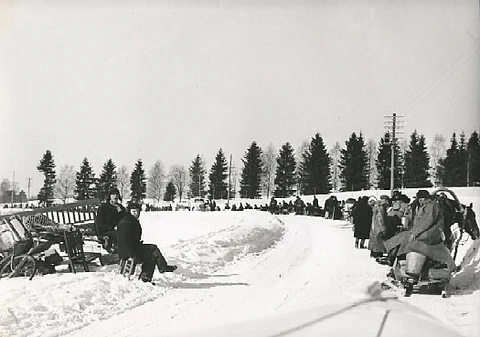

As we approach the 80th anniversary of the end of World War 2, we also recently passed the 80th anniversary of the end of the "Winter War" between the Finland and the Soviet Union, which lasted from 30 November 1939 until 13 March 1940.
The Winter War from 1939-1940, and the "Continuation War" from 1941-1944 are largely seen as being autonomous conflicts between the USSR and Finland amid the greater conflict in Europe. To this day, much Western commentary portrays Finland as the victor due to the fact that Finland did not become part of the Soviet Union. However, the truth Is Finland lost these two conflicts and isn't a post-Soviet state today only because Stalin didn't want Finland.
Lead up to the Winter War
The modern Finnish state, which had been part of Sweden for 500 years, was created in 1809 as The Grand Duchy of Finland, an autonomous state within the Russian Empire, when Russia took control of the territory during the Napoleonic Wars.
After the fall of Tsarist Russia in 1917, Finland would declare independence, and after a civil war between the nationalist "whites" and the Bolshevik backed "reds", the whites won and in 1920, Bolshevik Russia and Finland would sign a peace agreement, formalizing the borders between the two countries.
With the outbreak of the World War 2 in September of 1939, the Soviet Union would become concerned about Finland being used as a staging ground for future attacks on the them, concerns they had since 1920. On October 5th, negotiations between the two countries began, with Soviet leader Joseph Stalin himself being present to show the seriousness of the diplomatic efforts and would attend six of the seven meetings between the two sides over the course of six weeks.
During the negotiations, the Soviets listed their demands. The Finnish border, just 20mi (32km) from Leningrad be moved back by about 45mi (72km), Finland cede control of some islands in the Gulf of Finland, along with the Rybachy Peninsula in the north, which Finland shared with the USSR on the Arctic Sea, and for the Finns to allow the Soviets to lease a base on the Hanko Peninsula.
In return, the Soviet Union would give Finland territory that Finland gave up in 1920. The territory offered to Finland was much bigger than the territory Finland would give up.
War and First Surrender
Finland began secretly mobilizing during the negotiations, and walked away from negotiations on November 13th, on November 30th, the Soviet Union would invade. The Finns would largely absorb the Soviet blows for two months, until the much bigger Red Army would redeploy more forces. By mid-February the Finnish army was exhausted and by early March the Red Army had broken through the main defensive line of the Finnish army.
On March 6th, Finland proposed an armistice, which the Soviets rejected, the following day a Finnish delegation, led by the Prime Minister Risto Ryti, arrived in Moscow, Stalin refused to meet them, and his representatives, who weren't there to negotiate, greeted the Finns with terms for capitulation.
On March 12th, the Moscow Peace Treaty was signed, Every pre-war Soviet demand was met and then some, Finland ended up ceding about 10 percent of its territory, including Vipurri, its second largest city. and about 15 percent of its economy with about 12 percent of its population being displaced from the surrendered territory.
War Round Two
Finland would end up allying with Germany after the Fall of France in June of 1940, in June of 1941, they would invade the Soviet Union alongside Germany, quickly taking back its lost territory and advancing deep inside Soviet territory, occupying most of the Karelo-Finnish SSR, modern day Republic of Karelia in Russia, and participating in the Siege of Leningrad with its forces just 12mi (20km) from Leningrad itself.
By August of 1944, the Finns were in the same position as before, exhausted and facing an advancing Red Army, they again chose to contact Moscow to make peace.
On September 19th, Finland accepted an armistice that restored all conditions from the peace treaty from 1940, while ceding further territory in the north of the country, the "Petsamo region", which cut Finland off the from Arctic Sea, with further concessions such as having to agree to neutrality, restrictions on their military, banning certain political parties that were seen as ideological allied to Germany, legalizing the Finnish Communist Party, as well as imprisoning the former President, Risto Ryti, both prime ministers who had served between 1941 and 1944, and numerous other cabinet members.
Stalin's Mercy
Stalin got what he needed out of Finland, twice. A neutral Finland, secured Leningrad, with Finland cut off from the Arctic and with the Soviets now dominant in the Gulf of Finland with a military base inside the country.
While nobody expects any Finn to thank Stalin for this "mercy", as its certain they wouldn't see it as such, Finland should consider itself lucky, they were given the courtesy of negotiations and even concessions from the Soviets before the war, something the Baltic states and Romania weren't given, which they declined, lost a war, attacked the Soviets alongside Germany and lost again, Stalin just wanted a neutralized Finland on his border, had he wanted a Soviet Finland he would have gotten it.